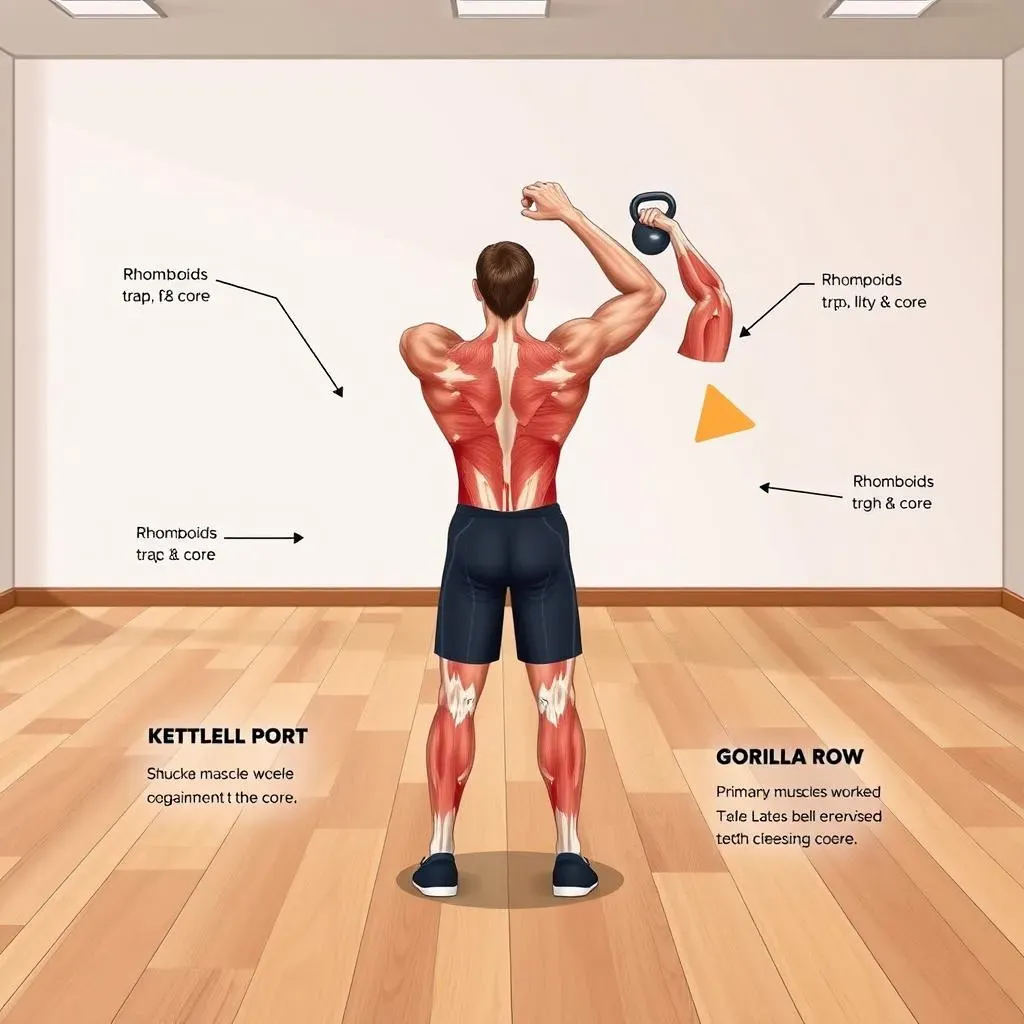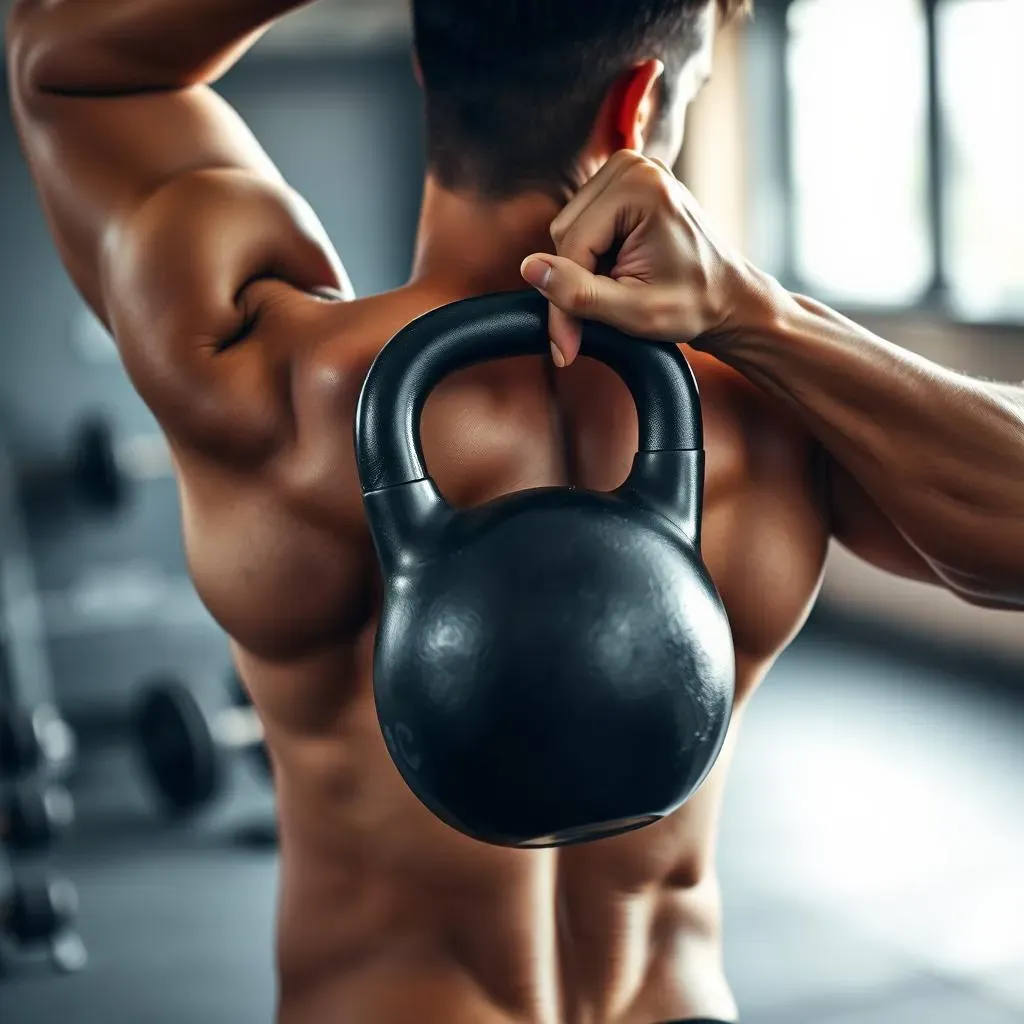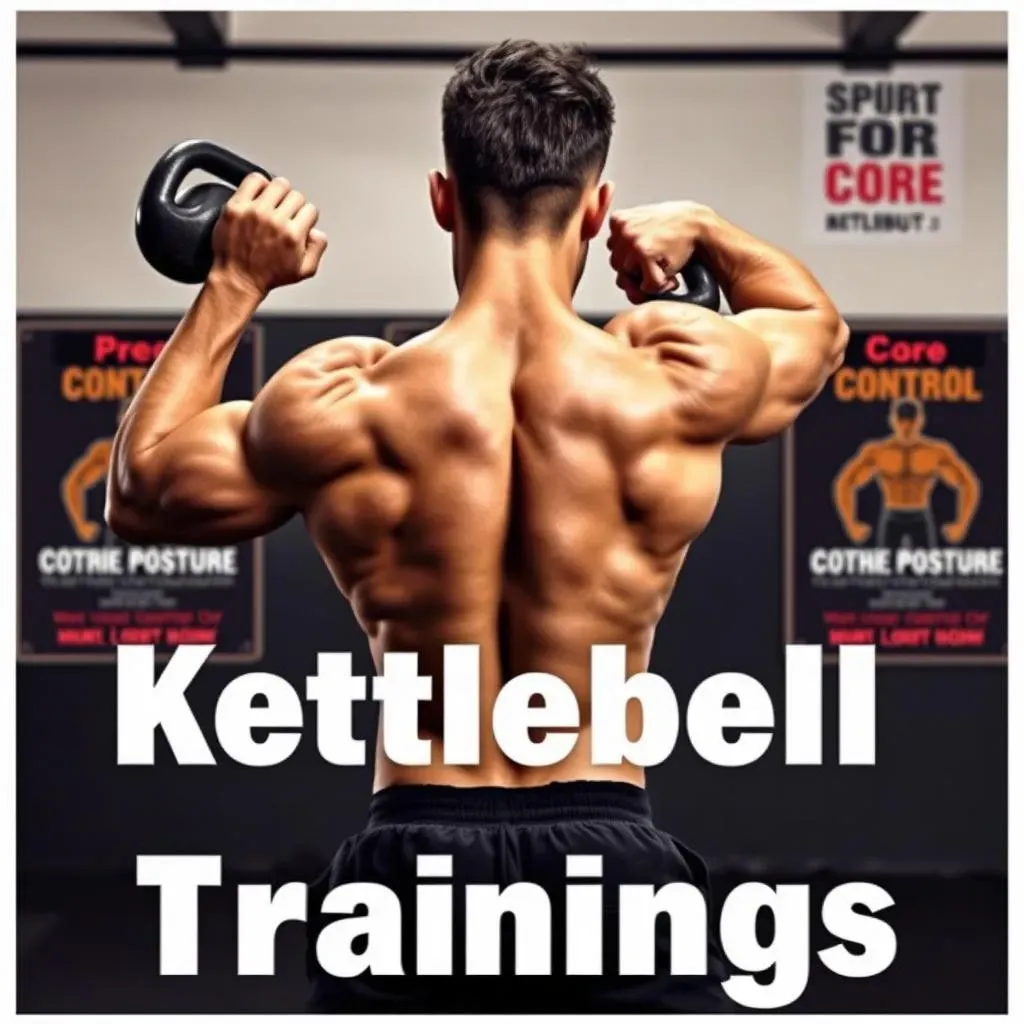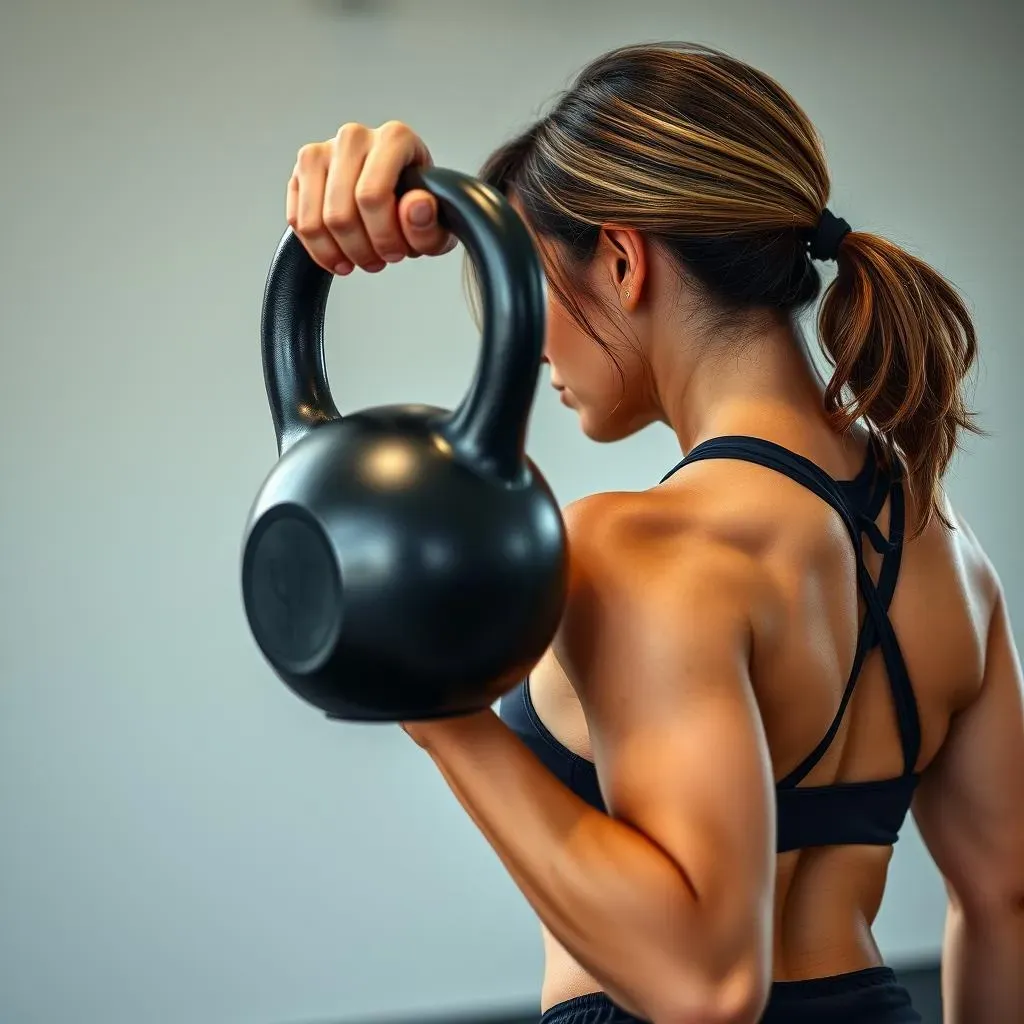Table of Contents
Tired of the same old barbell routine? Want a back that's not just strong, but also functional? Then it's time to grab a kettlebell! This article is your guide to unlocking a powerful and resilient back using the often-underestimated kettlebell. We're not just throwing weights around; we're building a back that can handle anything life throws at it. Forget those bulky machines; kettlebells offer a unique way to target your back muscles, promoting better movement, stability, and overall strength. We'll show you the eight best exercises, how to train effectively, and why this method is so beneficial. Get ready to discover a new approach to your back workout with kettlebell, and say hello to a stronger, more capable you. We’ll cover exercise selection, sets, reps, and even dive into the muscles you’ll be working. Let's get started!
Best Kettlebell Back Exercises for a Stronger You

Best Kettlebell Back Exercises for a Stronger You
The Three-Point Kettlebell Row
Okay, let’s get real, the three-point row is a game-changer. It’s not just about pulling a weight; it’s about engaging your entire back. You're in a staggered stance, one hand on a bench or box, and the other is pulling that kettlebell towards your ribs. It's like a handshake between your arm and your back muscles. This isn't some dainty move; it’s a powerhouse builder that hits the lats, rhomboids, and traps all at once. I remember the first time I tried these, my back felt like it had woken up from a long nap. I was sore, but it was a good sore, you know? The kind that tells you something is changing.
I’ve seen people struggle with this exercise, mostly because they’re trying to use their arms too much. It’s all about the squeeze in your back. Think about pulling your elbow towards your hip, not just lifting the weight. And don't be afraid to start with a lighter kettlebell. It’s not a race; it's about mastering the movement. Once you get that mind-muscle connection, you'll feel the difference. Trust me, this is one of those exercises that will make you feel like you're actually building something substantial.
Exercise | Primary Muscles Worked | Why It's Awesome |
|---|---|---|
Three-Point Row | Lats, Rhomboids, Traps | Engages the entire back, improves posture |
Gorilla Row | Lats, Core, Biceps | Builds strength, adds core stability |
Kettlebell Deadlift | Hamstrings, Glutes, Lower Back | Fundamental movement, full body strength |
The Mighty Gorilla Row
Next up, we have the gorilla row. This one’s a bit more dynamic and, let’s be honest, a little more fun. You’re in a plank position, with a kettlebell on each side of your hands. Then, you alternate rows, pulling one bell up while keeping your core rock solid. It's like you're channeling your inner primate, pulling up that weight with raw strength. I've seen people look so tough doing this, and it's not just for show. It works the lats, but also gets your core involved, making it a full-body power move.
The gorilla row is a great way to work on your stability and coordination. You’re not just pulling; you're also fighting to stay balanced. The biggest mistake I see is people rotating their hips as they row. Keep your hips squared to the floor, and engage your core. It's not about how fast you can row, it's about how controlled you can be. Start slow, get the form right, and then you can start to pick up the pace. It’s one of those exercises that gets progressively harder the better you get, which is exactly what you want.
How to Train Your Back Effectively with Kettlebells

How to Train Your Back Effectively with Kettlebells
Warm-Up is Key
Alright, so you're ready to swing some kettlebells, huh? Hold your horses! We can't just jump into heavy lifting without warming up. It's like trying to start a car in the dead of winter without letting the engine warm up first – not a good idea. A dynamic warm-up is your best friend here. Think arm circles, torso twists, and some light rows to get the blood flowing. You want to wake up those muscles, not shock them. I’ve definitely learned this the hard way, skipping warm-ups and ending up feeling like a rusty robot.
A good warm-up doesn't have to take forever; five to ten minutes is usually enough to get things going. Focus on movements that mimic what you'll be doing in your workout. For a back workout with kettlebells, this means getting the shoulders and upper back nice and loose. A few cat-cow stretches and some gentle swings can work wonders. The goal isn't to tire yourself out, it's to prepare your body for the work ahead. Trust me, a good warm-up is like the secret handshake to a great workout.
Mind-Muscle Connection
Okay, this is where things get a little more interesting. It's not just about moving the weight from point A to point B; it's about feeling the muscles working. When you're doing a row, you should feel your lats and rhomboids engaging. It's about focusing on that connection between your brain and the muscles doing the work. I've found that slowing down the movement and really concentrating on the squeeze helps immensely. It's like having a conversation with your muscles, asking them to do their job.
This mind-muscle connection isn't something that happens overnight. It takes practice, and it requires you to really pay attention to your body. Don't just go through the motions; be present in each rep. If you're not feeling the right muscles working, adjust your form or try a lighter weight. It's better to do a few reps correctly than to do a bunch of reps with bad form. This is a skill that improves over time, and it's what separates a good workout from a great workout.
Progressive Overload
Now, let's talk about making real progress. You can't just keep doing the same thing over and over and expect to see big changes. That's where progressive overload comes in. It basically means you need to gradually increase the demands on your muscles over time. This could mean adding more weight, doing more reps, or increasing the number of sets. It's like slowly turning up the volume on your workout.
I'm not saying you need to jump up 10 pounds every week, but you should always be looking for ways to challenge yourself. Maybe that means adding one more rep to each set, or maybe it means switching to a heavier kettlebell when you feel ready. The key is to listen to your body and make sure you’re not pushing yourself too hard too soon. Consistency is key; small, steady progress is better than huge leaps that lead to injuries. It's a marathon, not a sprint.
Training Principle | Description | Why It Matters |
|---|---|---|
Warm-up | Dynamic movements to prepare muscles | Prevents injuries, improves performance |
Mind-Muscle Connection | Focusing on feeling the muscles working | Increases muscle activation, better results |
Progressive Overload | Gradually increasing the demands on muscles | Promotes consistent muscle growth and strength gains |
Choosing the Right Kettlebell Back Exercises and Workout Plan

Choosing the Right Kettlebell Back Exercises and Workout Plan
Picking Your Moves
Alright, so you're itching to start your back workout with kettlebell, but where do you even begin? It's like walking into a candy store; everything looks good, but you can't try it all at once. You have to be smart about it. Start with the basics, the exercises that give you the most bang for your buck. Think of the three-point row and the deadlift as your foundation. They’re compound movements, meaning they work multiple muscle groups at once, which is perfect for building overall back strength. I always tell people, don’t try to be a hero and do all the fancy stuff right away. Master the basics, and the rest will follow.
Next, think about what you want to achieve. Are you aiming for pure strength, or are you trying to build muscle? Maybe you want to improve your posture? Your goals will dictate which exercises you choose and how you structure your workout. If you're looking for muscle growth, you’ll want to focus on exercises that allow you to lift a decent amount of weight for a moderate number of reps. If you’re after strength, you’ll want to go heavier with fewer reps. It’s all about tailoring your workout to your specific needs. Don’t just pick random exercises; pick them with intention.
Goal | Exercise Focus | Rep Range |
|---|---|---|
Strength | Heavy compound movements | 3-5 reps |
Muscle Growth | Compound and isolation exercises | 8-12 reps |
Endurance | Lighter weight, higher reps | 15+ reps |
Crafting Your Plan
Now that you've got your exercises picked out, let’s talk about putting them into a workout plan. Don't just throw a bunch of exercises together and hope for the best. It's like trying to bake a cake without a recipe; it’s probably not going to turn out too well. Start with a solid warm-up, then move into your main exercises, and finish with a cool-down. I like to structure my back workouts with a mix of pulling and hinging movements. This means doing rows and deadlifts, for example. It’s like a well-balanced meal for your back muscles.
When it comes to sets and reps, it really depends on your goals and experience level. If you're new to this, start with 3 sets of 8-12 reps for each exercise. As you get stronger, you can increase the weight, reps, or sets. Don't be afraid to experiment a little bit to find what works best for you. The key is to be consistent and to listen to your body. If you're feeling pain, stop and adjust your form or take a break. It's better to be smart and safe than to push yourself too hard and get injured. Remember, it's a journey, not a race.
Tips for Safe and Effective Kettlebell Back Training

Tips for Safe and Effective Kettlebell Back Training
Prioritize Proper Form
Okay, let's talk safety because nobody wants to end up with a tweaked back, right? When it comes to kettlebells, form is king. It's way more important than how much weight you're lifting. I've seen people trying to swing huge kettlebells with their backs rounded like a question mark, and it's just a recipe for disaster. You should always focus on keeping your back straight, your core engaged, and your movements controlled. Think of it like this: you wouldn't try to build a house on a shaky foundation, so don't build your back strength with sloppy form.
Proper form isn't just about avoiding injuries, it's also about getting the most out of each exercise. When your form is on point, you're actually working the right muscles. I know it can be tempting to cheat a little bit to lift more weight, but trust me, it's not worth it in the long run. Start with a lighter kettlebell and focus on mastering the movement. Once you've got the form down, you can start to gradually increase the weight. It's better to be safe and effective than to be reckless and injured.
Tip | Why It Matters |
|---|---|
Keep your back straight | Prevents back injuries |
Engage your core | Provides stability and power |
Control your movements | Ensures you're working the correct muscles |
Start with a lighter weight | Allows you to master form |
Listen to Your Body
Here’s the thing: your body is pretty smart. It will tell you when something's not right, so it's important to listen. If you're feeling sharp pain, stop what you're doing immediately. Don't try to push through it, thinking you're being tough. That’s how you end up sidelined for weeks. I’ve been there, and it’s not fun. Learn to differentiate between muscle soreness and actual pain. Soreness is normal after a good workout, but pain is a sign that something is wrong.
Also, don't be afraid to take rest days. Your muscles need time to recover and rebuild. Overtraining is a real thing, and it can lead to injuries and burnout. I used to think that more was always better, but I've learned that rest is just as important as the workout itself. It's about finding that balance between pushing yourself and giving your body the time it needs to recover. So, be smart, listen to your body, and don't be afraid to take a break when you need to. Your back will thank you for it.
"The body achieves what the mind believes." - Napoleon Hill
Benefits of Training Your Back Using Kettlebells

Benefits of Training Your Back Using Kettlebells
Why Kettlebells are a Back's Best Friend
Okay, let's get down to brass tacks: why should you even bother with a kettlebell for your back? I mean, we've got barbells, machines, all sorts of fancy equipment, right? Well, kettlebells offer something unique. They're not just about lifting weight; they're about moving weight in a way that mimics real-life activities. Think about it: you're not always lifting things in a perfectly straight line. Sometimes you're bending, twisting, reaching – and that's where kettlebells shine. They're fantastic for building functional strength, the kind that actually translates to everyday life. I remember when I first started using kettlebells, I noticed a huge difference in how my back felt, not just in the gym, but when I was doing things like carrying groceries or moving furniture. It's like my back finally had the strength and stability it needed.
Another thing I love about kettlebells is their ability to work your muscles unilaterally. What does that mean? It means you're working one side of your body at a time. This is great for correcting imbalances and making sure that both sides of your back are equally strong. Think about those times you've felt weaker on one side than the other. Kettlebells help even things out, and that can make a huge difference in your overall strength and posture. Plus, they're just plain fun! There’s something about swinging a kettlebell that just feels powerful, like you're actually accomplishing something. It’s not just a workout; it’s an experience.
Benefit | Description |
|---|---|
Functional Strength | Mimics real-life movements |
Unilateral Training | Corrects imbalances, builds even strength |
Improved Stability | Strengthens core and back muscles |
Understanding the Muscles of Your Back

Understanding the Muscles of Your Back
The Big Players: Lats and Traps
Alright, let's talk about the muscles that make up your back. It's not just one big slab of meat; it's a complex network of muscles working together. First up, we've got the latissimus dorsi, or "lats," for short. These are the big, wing-like muscles that run down the sides of your back. They’re responsible for pulling movements, like rows and pull-ups. Then there are the trapezius muscles, or "traps," which span from your neck down to the middle of your back. They help with shoulder movement, posture, and even head control. Think of them as the main powerhouses of your upper back. I always picture the lats as the muscles that make you feel like you're flying when you do a pull-up, and the traps as the muscles that keep you standing tall.
It's not just about knowing what they are; it's about feeling them working. When you're doing those kettlebell rows, you should be thinking about squeezing your lats and traps. It's all about that mind-muscle connection we talked about earlier. If you're not feeling those muscles working, then you might need to adjust your form or try a different exercise. Understanding the muscles of your back is like having a map of the territory; it helps you navigate your workouts more effectively. And trust me, knowing this stuff makes a huge difference in your overall results.
Muscle | Location | Function |
|---|---|---|
Latissimus Dorsi (Lats) | Sides of the back | Pulling movements |
Trapezius (Traps) | Upper and middle back | Shoulder movement, posture |
Rhomboids | Upper back, between shoulder blades | Retracting the shoulder blades |
The Supporting Cast: Rhomboids and More
Now, let's shine some light on the unsung heroes of your back, the muscles that don't always get the spotlight. We have the rhomboids, which sit between your shoulder blades. They're responsible for pulling your shoulder blades together, which is super important for good posture. Then there’s the erector spinae, a group of muscles that run along your spine. They help you bend, twist, and keep your back stable. I like to think of the rhomboids as the muscles that keep your shoulders from slouching, and the erector spinae as the foundation of your back. They may not be as big and flashy as the lats, but they’re just as important for overall back health and function.
When you're doing exercises like the kettlebell deadlift, you're hitting all of these muscles, not just the lats and traps. It’s a full team effort, working together to make you stronger and more resilient. It’s like having a well-oiled machine; every part plays a critical role. So, next time you’re working out, don’t just focus on the big muscles; remember to give those supporting muscles some love too. They’re working hard behind the scenes to keep you strong and stable. It’s all about understanding how these muscles work together to create a powerful and functional back.